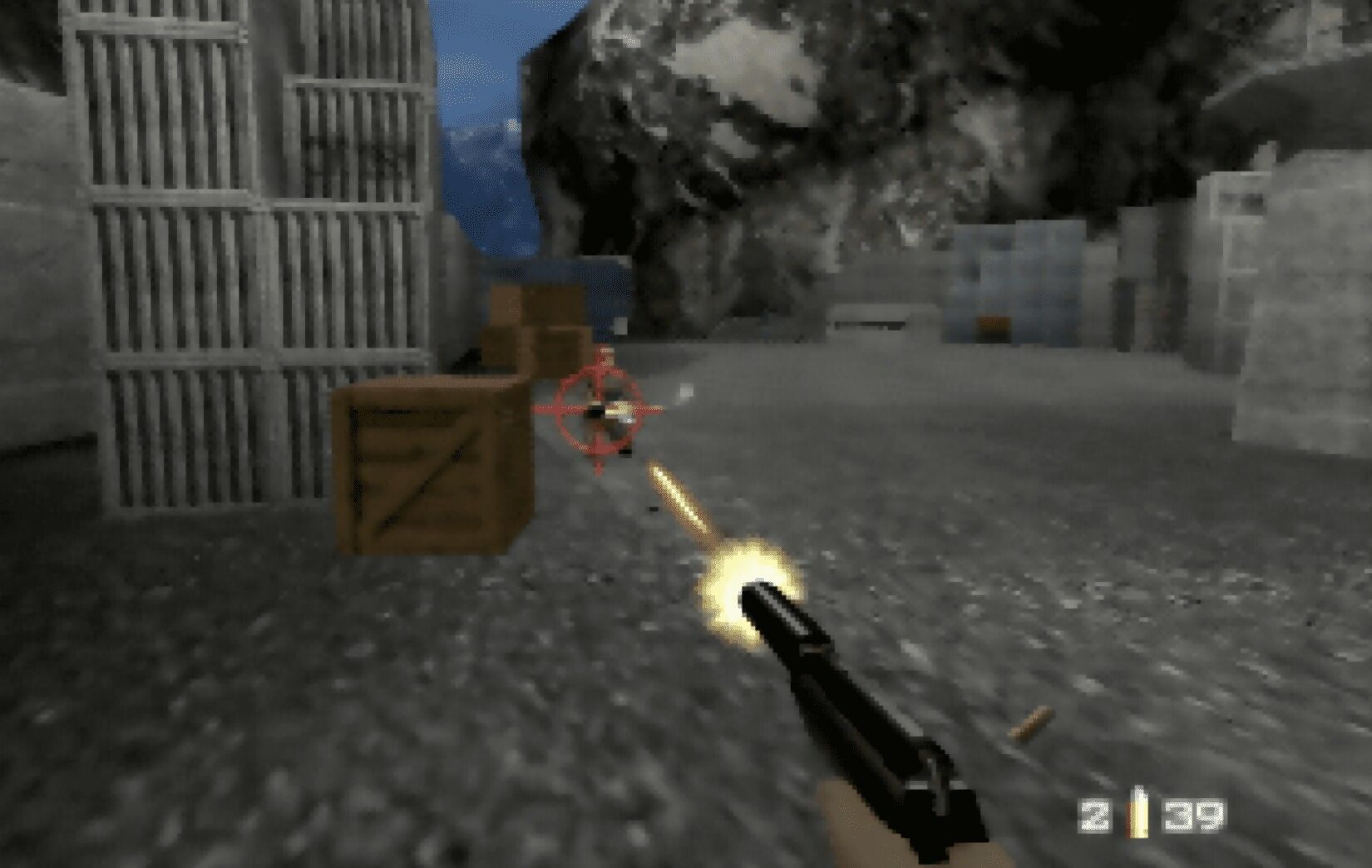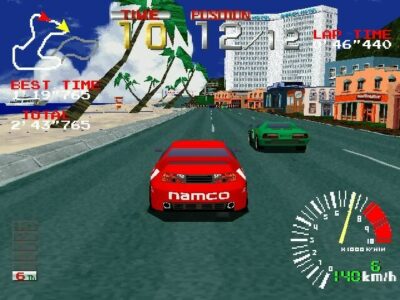
For some reason, GoldenEye 007 has been at the forefront of many a mind in recent weeks – probably because of the scrapped XBLA remake that bubbled up in the news back in February. Head back to Rare’s classic game about the world’s worst spy (he never, ever blends in) though, and one thing stands out: aim mode.
We’re accustomed to how first-person shooters work on pads these days, but back in 1997, it was still a relatively new thing – especially with an analogue stick – to move your gunman with anything other than a keyboard and mouse.
We’d got by OK for a while with standard controllers, of course – a static series of inputs for a thoroughly digital time while skating around low-res, warped-polygon mazes, but things had changed. The 3D space had gone from a technical showcase to an integral part of a game’s design, and with that came the need to shoot your guns at people who weren’t just stood right in front of you (or registered as though they were, à la DOOM etc.). Standard controllers picked up the baton, of course, and I have strong flashbacks to an era of having to press shoulder buttons to look up and down – but this was boxy, imprecise. It wouldn’t do.

Rare, of course, understood this – that’s why it invented aim mode for GoldenEye 007. Well, I say ‘invented’ – it’s the earliest example I could find of a system like this in a console FPS, but there’s every chance something else did it prior. Either way, it was the game with Pierce Brosnan’s mug on the front of it that popularised the concept. And what a simple concept it was: you hold a button, a cross-hair appears on screen, and from there, you can precisely target whoever or whatever you like without movement – halted while holding the button – factoring in.

Suddenly, what was an imprecise and somewhat clunky approach to hitting the target became an elegant, smooth solution that empowered players to – quite literally – take their best shot. Of course, a lot of this came down to three very important factors at play: GoldenEye 007 in its very early days was pitched as a rail shooter like Operation Wolf; the N64 featured an analogue stick on its controller as standard, and GoldenEye 007 was being made specifically for the console. Had it been any other combination of the three, it’s unlikely we’d have ended up with a solution that fitted so very well – had it been a game also coming to the PlayStation, say, where not everybody had an analogue controller, there’s no reason Rare would have thought of introducing a mechanic in which players control a cross-hair on the screen, given digital inputs would make the whole process… let’s go with ‘irritating’. So it really was perfect storm stuff.

That additional input players have via aim mode lifts the whole experience of GoldenEye 007; even if the core mechanics are similar to any other FPS before or since, the feeling you get thanks to that extra slice of controllability marks the whole game as something different. Something more. It strips away some of the feelings of linearity – of an FPS being whack-a-mole across various grey corridors – as you wrest direct control of Bond’s aiming arm and take full advantage of that licence to kill. Pop, body shot. Pop-pop, couple in the arms. Pop, ah yes, I shot him in the groin as I am a monster.
Aim mode made its return in the GoldenEye 007 follow-up that came sans Bond, in 2000’s Perfect Dark. The breakaway dev team of Free Radical, formed from many of the old hands behind GoldenEye 007 and Perfect Dark, kept aim mode relevant in the PS2/Xbox/GameCube era with its TimeSplitters series. There are other examples too, often in titles named Operation Smash The Foreigners and the like, but aim mode specifically didn’t find a huge footing in the world of the FPS. Not for a bad reason, mind you.
Because, of course, we’ve evolved into using aim down sights (ADS) for the vast majority of FPSs these days: the 3D re-creation of a lovingly crafted and rendered gun model raising up to the centre of the screen, the camera zooming in to emulate our avatar leaning forward into an aiming stance, and the chance to pick our targets however we see fit using a bit of metal, or a red dot, or a holographic sight, or some other terrifying thing that makes it easier and easier for people to kill other people.
Aim mode served a purpose and did a great job while it lasted, however it was – quite rightly – usurped by a better mechanic. But that doesn’t stop it from being a killer feature in its own right, though.





